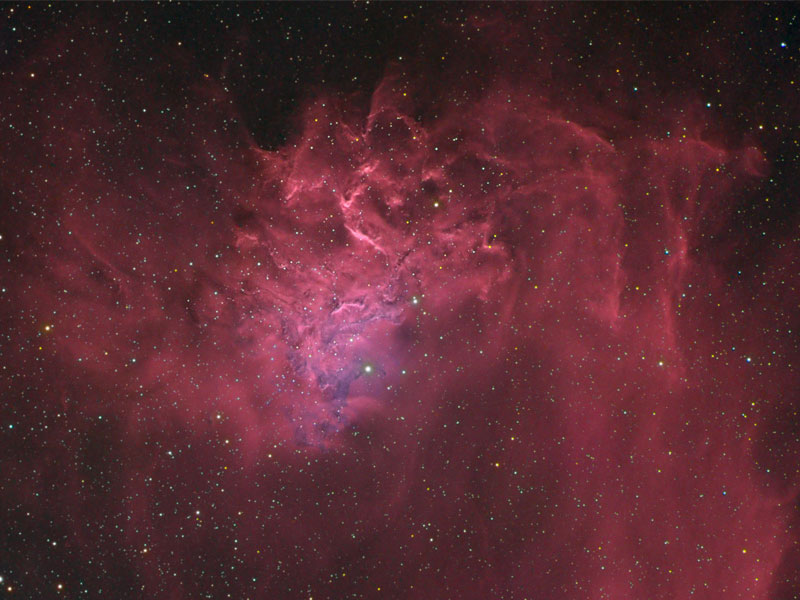
|
Credit & Copyright: Thomas V. Davis
(tvdavisastropix.com)
Explanation:
Is star AE Aurigae on fire? No.
Even though
AE Aurigae is named the flaming star,
the surrounding nebula
IC 405 is named the
Flaming Star Nebula, and the region appears to harbor red smoke,
there is no fire.
Fire,
typically defined as the rapid molecular acquisition of
oxygen,
happens only when sufficient oxygen is present and is not important
in such high-energy, low-oxygen environments such as stars.
The material that appears as smoke is mostly
interstellar hydrogen,
but does contain smoke-like dark filaments of carbon-rich
dust grains.
The bright star
AE Aurigae, visible just below the image center, is so hot it is blue,
emitting light so energetic it knocks
electrons away from surrounding
gas.
When a proton
recaptures an electron, red light is frequently emitted, as seen in the surrounding
emission nebula.
Pictured above, the
Flaming Star nebula lies about 1,500
light years distant, spans about 5 light years,
and is visible with a small telescope toward the
constellation of
the Charioteer (Auriga).
|
January February March April May June July August September October November December |
| |||||||||||||||||||||||||||||||||||||||||||||||||||||||
NASA Web Site Statements, Warnings, and Disclaimers
NASA Official: Jay Norris. Specific rights apply.
A service of: LHEA at NASA / GSFC
& Michigan Tech. U.
Based on Astronomy Picture
Of the Day
Publications with keywords: AE Aurigae - emission nebula
Publications with words: AE Aurigae - emission nebula
See also:
- APOD: 2025 December 9 Á The Heart of the Soul Nebula
- APOD: 2025 September 19 Á The NGC 6914 Complex
- APOD: 2025 September 10 Á The Great Lacerta Nebula
- APOD: 2025 July 21 Á Cats Paw Nebula from Webb Space Telescope
- APOD: 2025 July 16 Á The Rosette Nebula from DECam
- APOD: 2025 July 5 Á Ou4: The Giant Squid Nebula
- APOD: 2025 June 26 Á The Seagull Nebula
